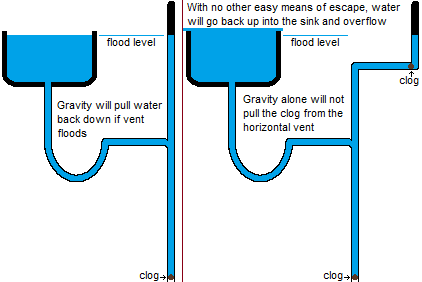We're rebuilding a bathroom from scratch. The plumbers had to reroute the sink vent pipe. It used to be mostly straight, with one 45-degree bend. Now it has two 90-degree bends. I've attached a photo of one of them.
Is this okay? We've had problems with sewer gas before, and I don't want to have that problem again.

Is this okay? We've had problems with sewer gas before, and I don't want to have that problem again.






